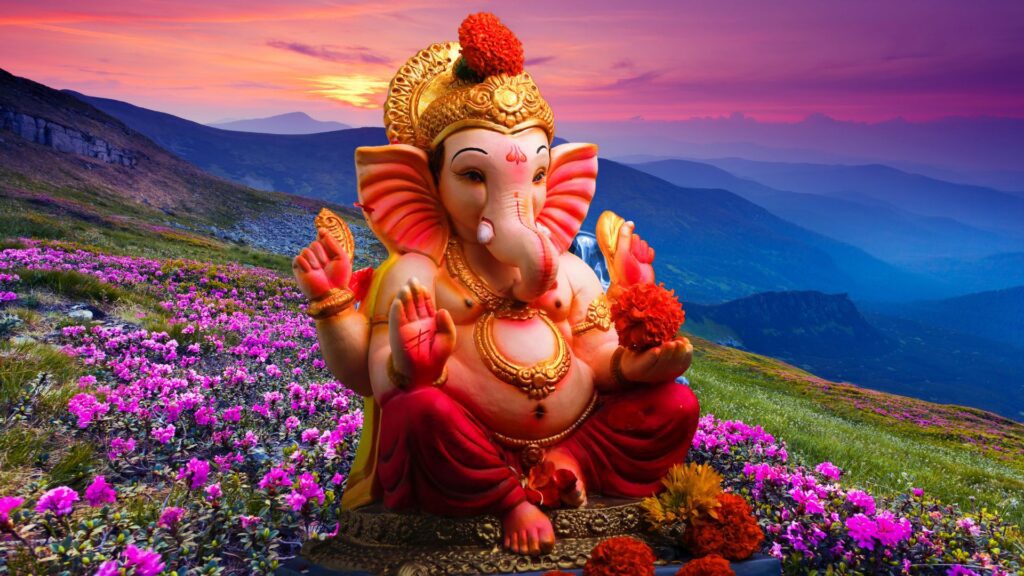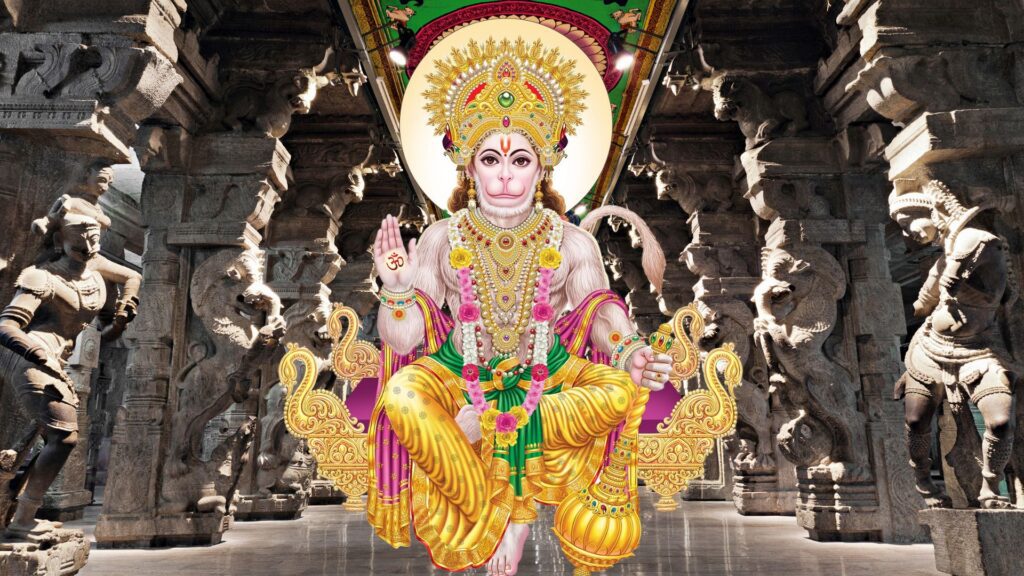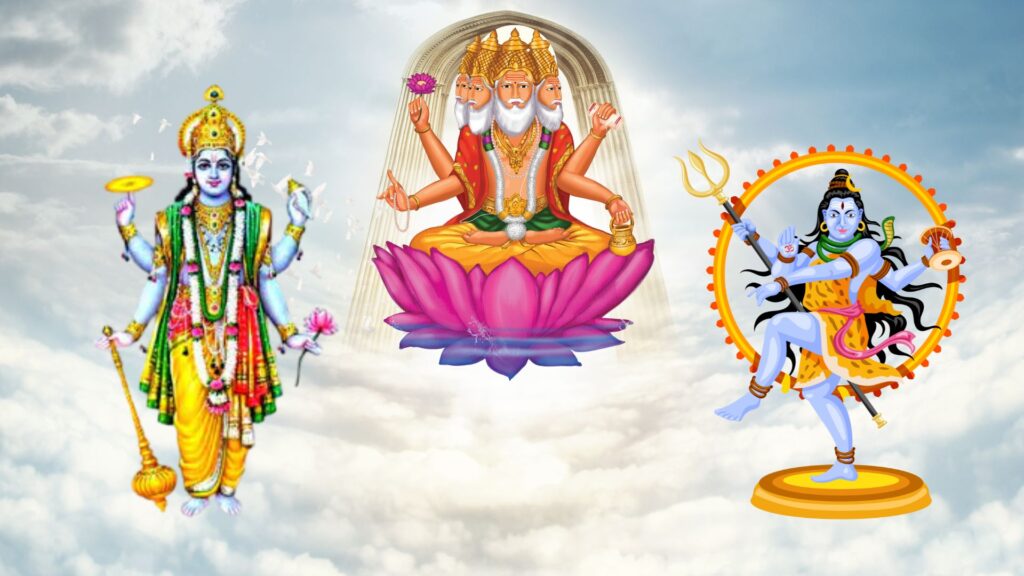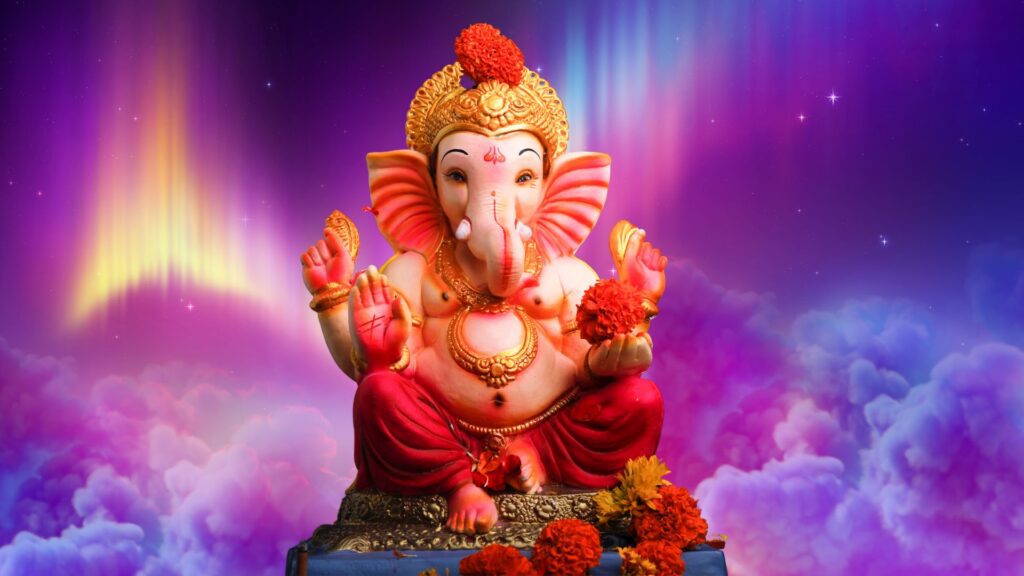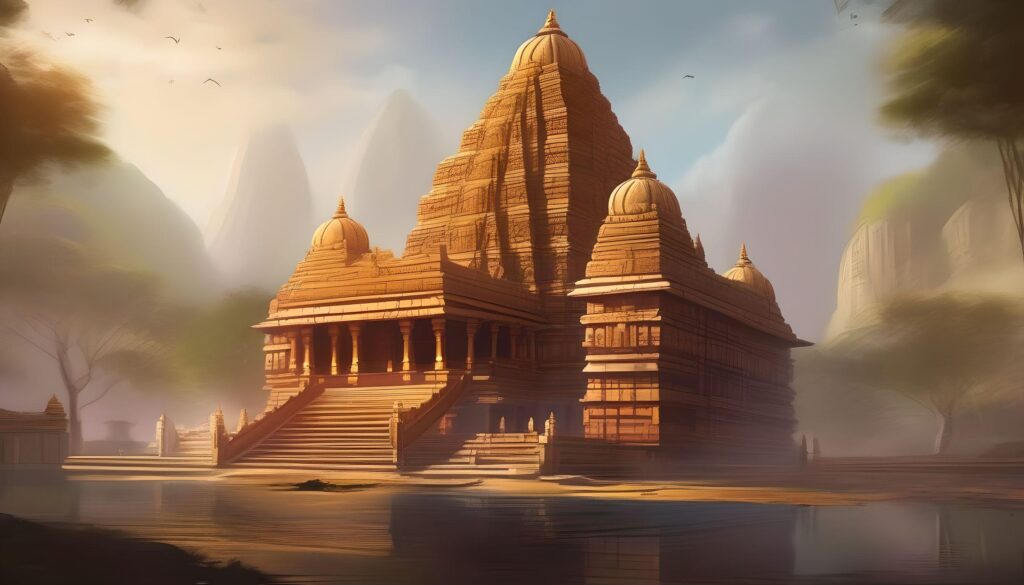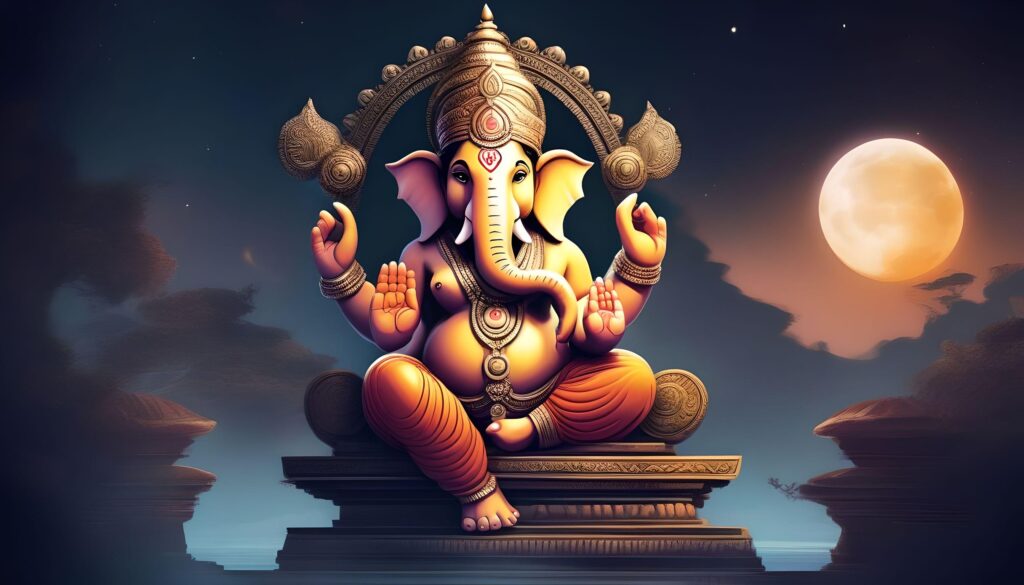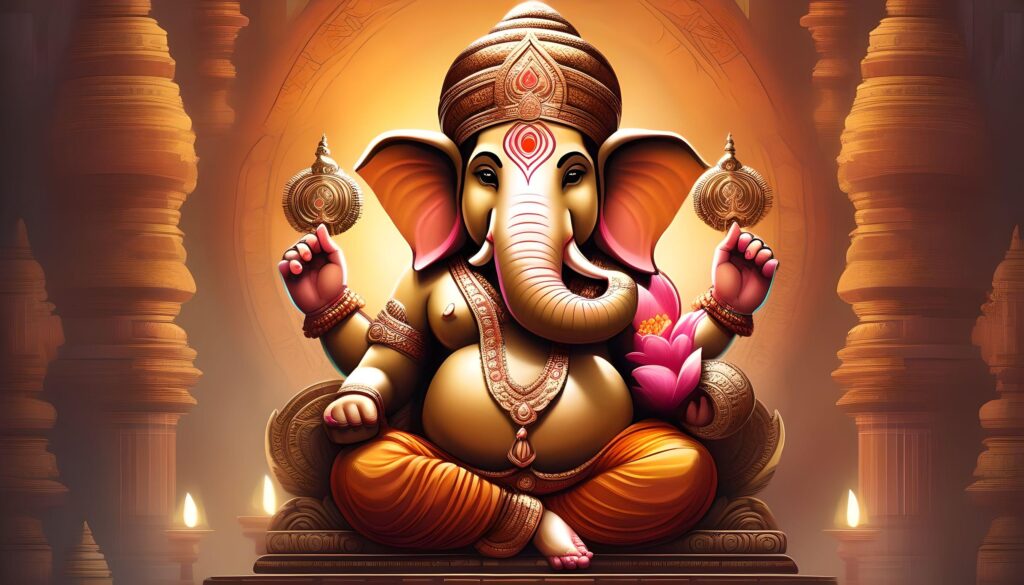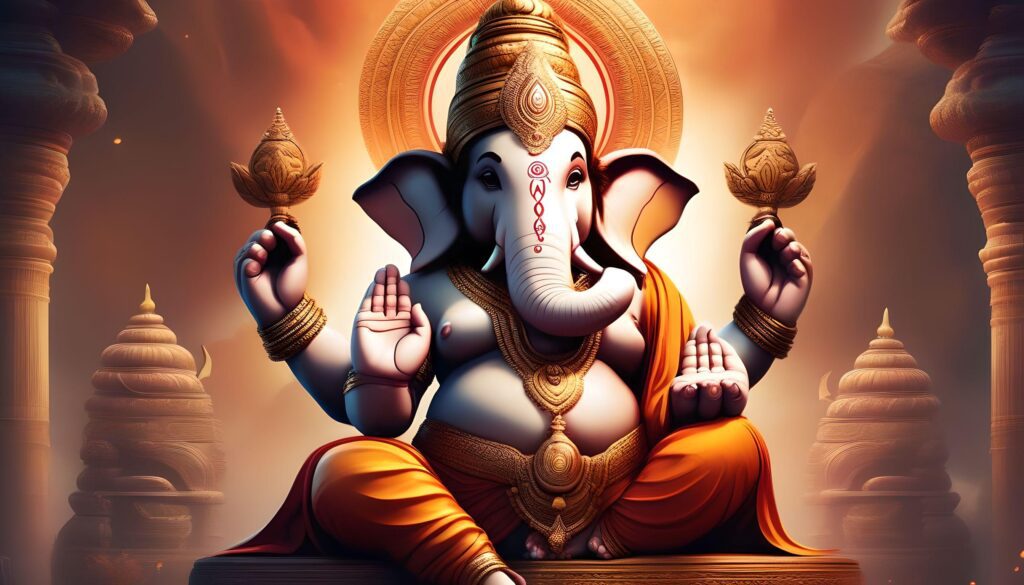Introduction to Lord Ganesha: Insights into the Deity’s Significance
In Hinduism, Lord Ganesha, alternatively referred to as Ganapati, Pillaiyar, or Vinayaka, holds a position of remarkable veneration. Devotees frequently petition Lord Vinayaka for favors such as prosperity, sagacity, fresh starts, fortune, and the ability to surmount challenges. He is the Supreme God of the Ganapatya sect and one of the most revered and well-known deities in the Hindu pantheon. This article is predominately concerned with the optimal way to recite the Divine Mantras of Lord Ganesha for optimal results.
Despite possessing numerous distinctive attributes, Lord Vinayaka’s elephant cranium renders him readily identifiable. Specifically, he is revered as a deity associated with wisdom and comprehension, a deity credited with surmounting obstacles and bestowing favorable outcomes. In light of the fact that he represents fresh starts, rituals and ceremonies commence with his veneration.
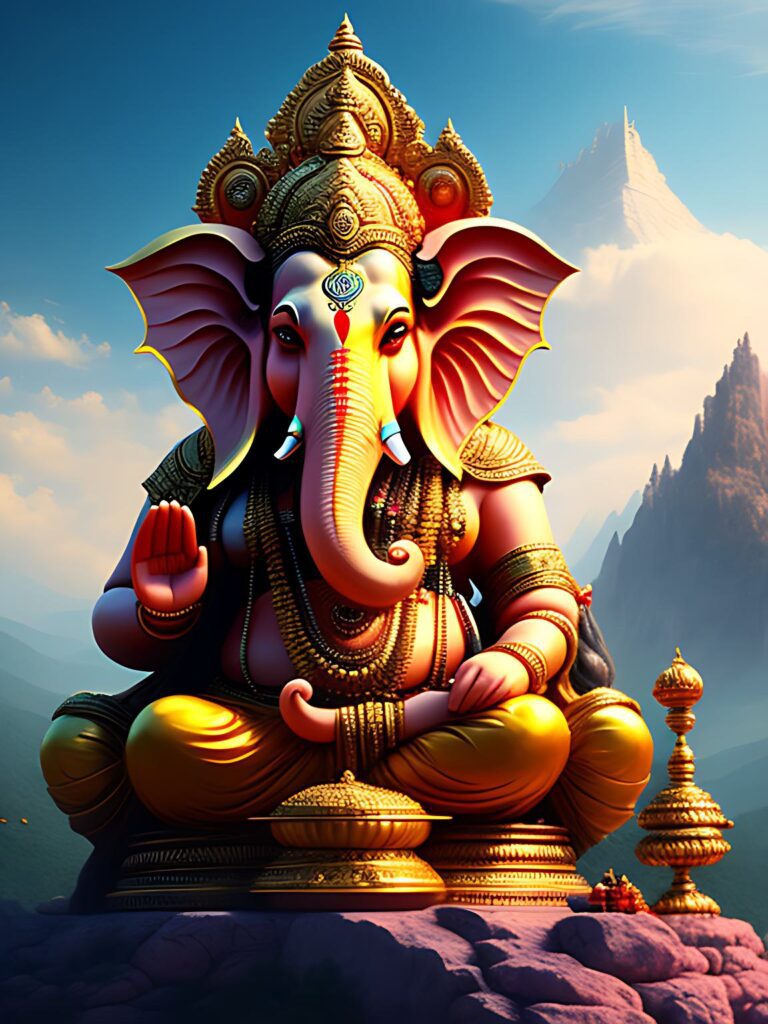
Exploring Sacred Texts: Insights into Lord Ganesha’s Worship
Three of the most important ancient Divine Chants (sacred texts) pertaining to Lord Ganesha are the Mudgala Purana, the Ganapati Atharvasirsha, and the Ganesha Purana.
- A hymn known as the “Ganapati Atharvashirsha” or “Ganesh Upanishad” is included in the Rigveda, the earliest Hindu scripture. Indeed, the text characterizes Lord Ganesha as the epitome of wisdom and the surmounter of barriers.
- Dedicated to Lord Ganesha, the Mudgala Purana contains extensive information regarding his birth, legends, and worship practices. Adherents of Ganesha regard it as an indispensable text.
- The Ganesha Purana is, as its name implies, a complete adoration of Lord Ganesha. Anthology of legends, rituals, and anecdotes pertaining to him serve to illustrate his divine essence and philosophical tenets.
The Muladhara Chakra: Lord Vinayaka and his Importance in Kundalini Yoga
The first chakra in Kundalini yoga is known as the Muladhara, and it is believed that this is the location of Ganesha. Mula is an equivalent translation of “original” or “main,” while adhara denotes “base” or “foundation.” The Muladhara Chakra serves as the foundation for the external expansion or manifestation of the fundamental Divine Forces. Conversely referred to as the Root Chakra. By chanting or listening to his Divine Chants, invoke Lord Vinayaka in order to obtain his blessings for a positive energy flow or vibrations in your vicinity.
Invoking Lord Ganesha: Rituals and Practices to Connect with the Divine
Lord Vinayaka-dedicated Divine Chants, Mantras, and Shlokas chanted are potent means of appeasing and establishing a connection with him. To seek the blessings of Lord Ganesha, one may engage in the following rituals and practices:
1. Create a Sacred Space:
To begin, locate a tranquil and pristine space within your residence or a designated altar in order to establish a sacred area for your religious observances. Adorn it with blossoms, incense, and a Ganesha image or idol, while reciting Ganesha mantras.
2. Perform Pranayama:
Focus on your breath and perform pranayama (breathing exercises) to prepare yourself for worship and to soothe the mind prior to beginning your practice.
3. Offerings:
Present Lord Vinayaka with traditional offerings, including incense, fresh fruits, candies (particularly Modak), and flowers (particularly Red Hibiscus flowers). Present them in the vicinity of the image or idol of Lord Ganesha in order to convey your sincerity and appreciation.
4. Divine Chants:
Shrikas and mantras devoted to Lord Ganesha, including “Om Gam Ganapataye Namaha” and “Vakratunda Mahakaya” Mantras, should be recited. Engage in sincere and concentrated chanting, permitting the vibrations of the mantras to reverberate within oneself. the revered Ganapati mantra atop
5. Offer Prayers:
Devoutly petition Lord Ganesha, conveying your sincere intentions and aspirations while entreating for his bountiful favor. This can be accomplished either in silence or through the recitation of stotras or petitions dedicated to Lord Ganesha.
6. Perform Aarti:
As you chant the Ganesha Aarti, ignite a lamp or candle and conduct aarti (circular movement of the lamp). In contrast, this signifies the provision of light and the elimination of darkness and is a devotional practice.
7. Meditation and Contemplation:
During a period of silent meditation, direct your attention towards the form, attributes, or Divine Chants (Mantra) of Lord Ganesha. Reflect intently on his teachings and symbolism, permitting his essence to permeate your being.
8. Practice Seva:
Adopt acts of benevolence and service in an identical fashion as a sacrifice to Lord Vinayaka. This encompasses engaging in community service, charitable endeavors, and providing assistance to others.
An identical principle applies to the invocation of Lord Vinayaka’s blessings: sincerity, devotion, and pure intentions are paramount. Therefore, establish a sincere connection with him and maintain a consistent practice in order to foster a more profound connection with the deity.
Chanting the Mantras: Harnessing the Power of Lord Ganesha’s Divine Chants
Ganesha Namaskara Stotram:
The “Ganesha Namaskara Stotram” is a devotional liturgy devoted to the deity Lord Ganesha, consisting of verses in which reverence and salutations are directed in his direction. Hence, the recitation of this stotram is intended to solicit the guidance, wisdom, and protection of Lord Ganesha, as well as to invoke his favors and grace. Chanting the mantra for Ganesha on a daily basis is recommended.
Dwatrimshath Ganapathi Dhyanam:
Engaging in the “Dwatrimshath Ganapathi Dhyanam” is a contemplative and visual exercise that entails the embodiment of all thirty-two manifestations of Lord Ganesha. It is believed that this meditation will ultimately elicit the qualities and blessings associated with every manifestation of Lord Vinayaka. Dhyana Shlokas essentially offer fervent invocations to every manifestation of Lord Vinayaka. Furthermore, it is adherents’ belief that by reciting these Shlokas, one can achieve the realization of every desire. The Vinayagar mantra is an excellent method for attaining inner calm.
Ganesha Shodasa Nama stotram:
Devotional hymn “Ganesha Shodasa Nama Stotram” enumerates and chants sixteen sacred names in homage to Lord Ganesha. Every appellation signifies a distinct characteristic, excellence, or virtue of Lord Ganesha. It is believed that by reciting or listening to the Ganesha Shodasa Nama Stotram, one can seek the divine protection and blessings of Lord Ganesha and attract success in one’s life. Mantra Ganpati Mahamantra is extremely potent.
Eka Dantha stotram:
The following are a compilation of various narratives presented in the form of verses: Lord Vinayaka’s battle with Lord Parashurama, the incident in which he lost one of his tusks, his subsequent victory over Gajamukhasura, and numerous other divine stories.
Ganesha Dwadasa Nama Stotram:
A hymn to Lord Ganesha, the Ganesha Dwadasa Nama Stotram comprises a total of twelve of his name. Every appellation signifies a distinct attribute or characteristic of Lord Ganesha. The purpose of chanting or reciting this stotram is to beseech Lord Ganesha for protection and favors.
Ganesha Mahimna Stotram:
In the same way, this Stotram is a well-known Lord Ganesha mantra. However, it is explicitly stated that every Divine Chant or Mantra originates from Lord Ganesha. As a consequence, devotees routinely recite it in reverence for Lord Vinayaka. It is said that reciting this Stotram will result in good fortune and prosperity. Demonstrating complete devotion while reciting or listening to this stotram will result in the devotee attracting material fortune, happiness, and prosperity. Ganesha Namaha, ohm. “om shree ganeshay namah” “ganesha om gam ganapataye namaha”
Pratha Smarana Ganesha stotram:
Dedicated to Lord Ganesha, the Pratha Smarana Ganesha stotram is a well-known dawn prayer. Adherents of Hinduism observe the customary practice of commencing their petitions to God as soon as they gain consciousness. The purpose of these typically brief yet potent prayers is to facilitate profound devotion to the divine within one’s consciousness.
Runa Hara Ganesha Stotram:
“Runa Hara Ganesha Stotram” is an ecclesiastical hymn that is consecrated to Lord Ganesha and is invoked specifically to eliminate financial obligations and impediments. Devotedly reciting or chanting this stotram is said to alleviate financial burdens and obligations, as well as bring about general prosperity.
Sankata Nashana Ganesha stotram:
This is a potent invocation to Lord Ganesha in which one beseeches his favor to mitigate challenges, eliminate impediments, and bestow prosperity, tranquility, and achievement.
Ganapati Atharvashirsham:
A venerated Hindu text, Ganapati Atharvashirsham is a component of the Atharva Veda. This hymn is in homage to Lord Vinayaka. Subsequently, it is composed of mantras and divine chants (verses) that invoke and extol the bounties of Lord Ganesha. In addition, it is frequently chanted or recited in the course of rituals, prayers, or when seeking the protection and guidance of Ganesha.
Ganapati Sthavam:
Ganesha Stotram, alternatively referred to as Ganapati Sthavam, is a devotional hymn or prayer honoring Lord Ganesha. The stotram is comprised of verses in which Lord Vinayaka is praised and His favors are invoked. Fundamentally, every verse emphasizes a distinct facet pertaining to the form, attributes, and capabilities of Lord Ganesha. Furthermore, devotees frequently recite or chant this hymn in an effort to obtain Ganesha’s favor and to have impediments removed from their way.
Ganesha Veda Pada Sthavam:
A rare stotram that is dedicated to Lord Vinayaka. Its salutations are inscribed with the various names of Lord Ganapati, also known as the “nine gems.” Consequently, it is believed that daily recitation of this miraculous hymn will attract the Lord’s divine favor in the form of prosperity or fortune.
Ganashtakam:
A popular hymn or prayer, Ganeshtakam, is alternatively referred to as Ganeshashtakam. It comprises eight verses and is devoted to the deity Ganesha. Devotees recite or chant this prayer in an effort to obtain the protection and blessings of Lord Vinayaka. It is apparent that every verse of the Ganeshtakam extols distinct facets of the form, qualities, and attributes of Lord Ganesha.
Ganesha Mangalashtakam:
Typically, Mangala stotrams are recited subsequent to the recitation of numerous stotrams, hymns, or culminations of auspicious occurrences. “Good wishes” or “happy ending” are additional possible meanings for Mangalam. Reciting or chanting the “Ganesha Mangalashtakam” verses, which are devoted to Lord Ganapati, will elicit his blessings and good fortune.
Maha Ganapathi Trilokya Mohana Kavacham:
This is a sacrosanct hymn bestowed by Lord Vinayaka (The Lord of Ganas) for the purpose of safeguarding. The term “Maha Ganapathi Trilokya Mohana Kavacham” translates to “Lord Ganapathi’s armour, which unifies the three realms.”
Ganesha Kavacham:
The “Ganesha Kavacham” is a sacred invocation in which the devotees are encased in a shield or armor. It is believed to provide Lord Ganesha with divine protection and blessings. This hymn is composed entirely of verses that expound upon the diverse attributes and configurations of the Lord. Invoked individuals beseech the Lord for protection against adversaries, malevolent intent, detrimental forces, and unanticipated events.
Ganesha Bahya Puja:
Ganesha Bahya Pooja denotes Lord Vinayaka’s veneration. It is a form of devotion in which offerings and rituals are performed in an effort to appease Lord Ganesha. In essence, it integrates the spiritual, mental, physical, and vibrational aspects of worship, resulting in a potent method of paying homage to the Lord.
Ganesh Manasa Puja:
Ganesha Manasa Puja is a mental or recited form of devotional homage to Lord Ganesha in which he is regarded as a prayer. It involves establishing a mental connection with Lord Ganesha and performing puja (devotional worship) through the use of imagination and visualization.
Ganapati Pancharatnam:
The “Ganesha Pancharatnam” is a Sanskrit hymn comprised of five verses that pay homage to the deity Ganesha. It was composed by the renowned scholar and philosopher Sri Adi Shankaracharya. As a consequence, the appellation “Pancharatnam” possesses the significance of “Five Jewels,” signifying the invaluable nature of these verses in exaltation of Lord Ganapati.
Ganesha Suprabatham:
Ganesh Suprabatham denotes a devotional hymn or morning prayer chanted or recited in the name of Lord Ganapati, with the intention of obtaining his favor and benevolence.
Ganesha Swapa Geetham:
This hymn of eight verses is sung nocturnally, just prior to the temple of Lord Ganesha shutting its doors. By means of this hymn, we entreat him to enjoy a slumbering slumber.
Mushika Vahana Stotram:
The “Mooshika Vahana Stotram” is a devotional hymn that is devoted to Lord Ganesha. It centers on his distinctive characteristic of utilizing a rodent (mooshika) as his vahana, or divine vehicle. This stotram expounds upon the correlation between Lord Ganesha and the mouse, lauding its symbolic significance.
Narada Krutha Ganapathi Stuthi:
Composed by Sage Narada, the “Narada Krutha Ganapathi Stuthi” is a devotional hymn devoted to Lord Ganesha. This stuthi, which means “prayer,” seeks the bounties and grace of Lord Ganesha while extolling his virtues, qualities, and divine attributes.
As stated in the Narada Krutha Ganapathi Stuthi, Lord Ganesha is the embodiment of wisdom and divine knowledge, the remover of obstacles, and the paramount deity. It stresses the significance of pursuing the blessings and worship of Lord Ganesha in order to achieve success, happiness, and spiritual development.
Vigneswara Ashtotharam:
Devotional in nature, the “Vigneswara Ashtotharam” comprises 108 appellations attributed to Lord Ganesha. In the Ashtotharam, every name symbolizes a distinct quality, attribute, or facet of Lord Ganesha, thereby emphasizing his divine essence and importance.
However, it is a widely observed ritual among Lord Ganesha’s devotees to recite or chant the Vigneswara Ashtotharam in order to obtain his blessings, provoke his presence, and foster a more profound spiritual bond with him.
Yama’s Ganesha Ashtotharam:
His messengers are forbidden by the God of death, Lord Yama, to approach anyone in this Ashtotharam who is reciting these 108 names. Within this invocation, Lord Yama commands his aides or emissaries to abstain from approaching the devotees who venerate Lord Ganesha, the supreme deity of all Ganas.
Subsequently, in pursuit of one’s personal, professional, and spiritual objectives, chanting or hearing to the mantras of Lord Ganesha with fervor can assist in surmounting obstacles and frictions. His affirmations can therefore attract favorable circumstances, opportunities, and positive energy, resulting in material prosperity and success. Consistent recitation of the mantras may also improve mental concentration, self-control, and clarity of thought. It fosters devotion, facilitates mental purification, and generates an atmosphere of inner harmony and serenity.
#GaneshMantra #Mantra #GaneshMantraMeaning #chanting #VedicMantra #Yoga #goodluckMantra #Peace #Blessings #mantraforsuccess #BhaktiSarovar #Spiritual #Hinduism #ganpati #bappa #ganpatibappamorya #vinayaka #pillayar #lordganesha #devotional #puja #mantrachanting #mantrajaap #mantrajapa #vedicchants #srichants
